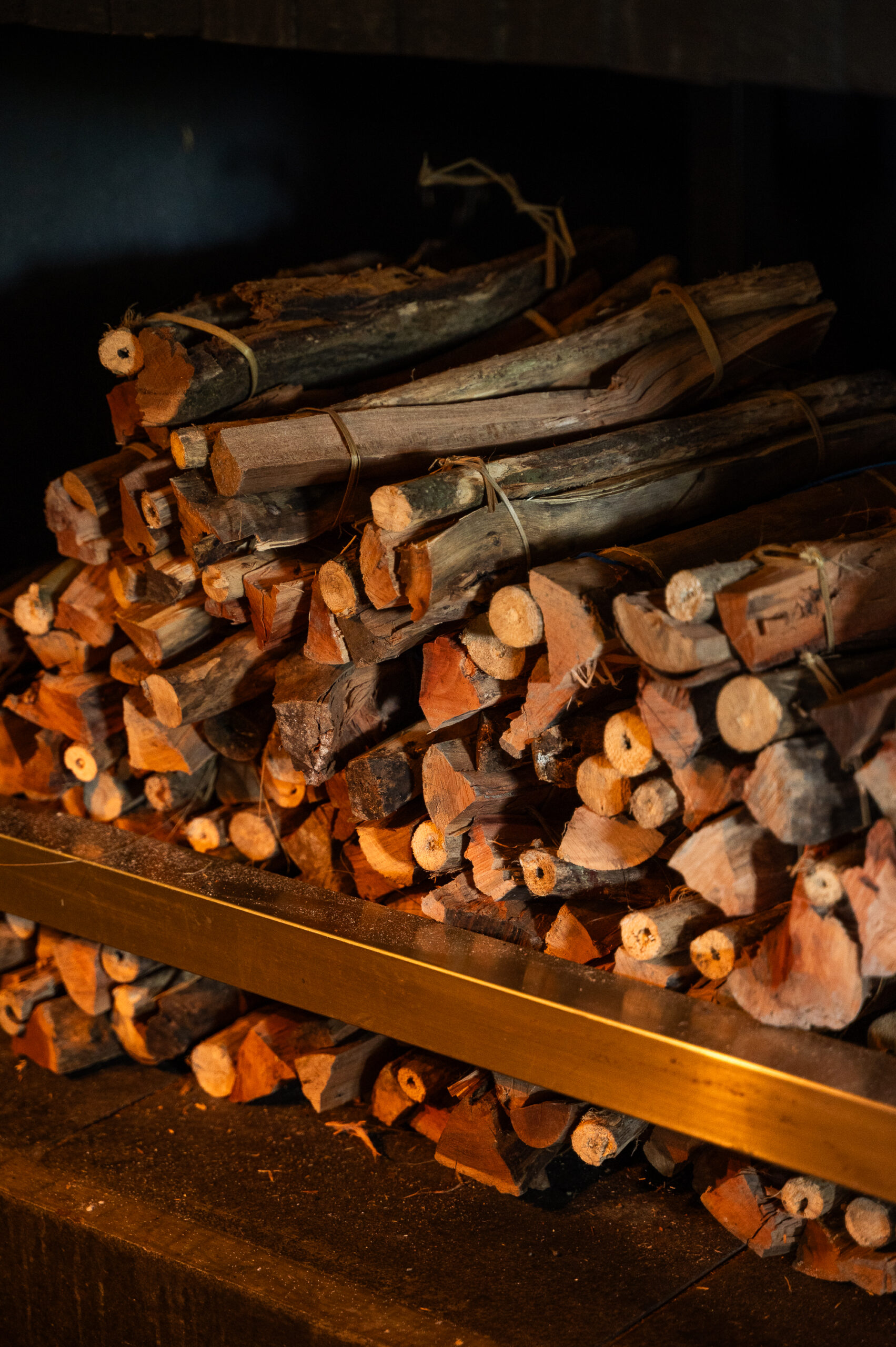Something built from the ground up is a thing of beauty. Situated near the entrance of The Ungasan, Waatu is thoughtfully designed, slate by slate. True to its name which means stone in Indonesian, the tactility of the restaurant’s black lava stone, charred wood, glinting custom-made grill, and glowing embers, against the white wall and burnished terracotta pots in the dining room, gives Waatu the intimacy of a cave while lending it a contemporary primitive flair.

The floor-to-ceiling glass windows boast a glorious view of the green lawn and adjoining swimming pool while supplying the dining room with plenty of breeze and lights. The compact open kitchen is full of activities. On the back wall, guests can see a neat line of a dry-aging fridge, a suspension grill for the skewers with its myriad of basting sauces, a wood-fire smoker, and an oven. The front counter is where the mise-en-place is located, the last finishing stop before the dishes are ready to serve.
Culinary director James Viles stands next to his head chef Andy Photiou. Both men have worked together since the early days of the two-hatted Biota Dining. Photiou is flaming the embers and deftly flipping the skewers, passing them to Viles, who then season them. Tia Evans – Dunne, Waatu’s floor manager, serves them to a ravenous group of guests. Their tables are already laden with various cocktails and mocktails, expertly concocted by the mixologists team. Everything is done in expertly conducted sequences.
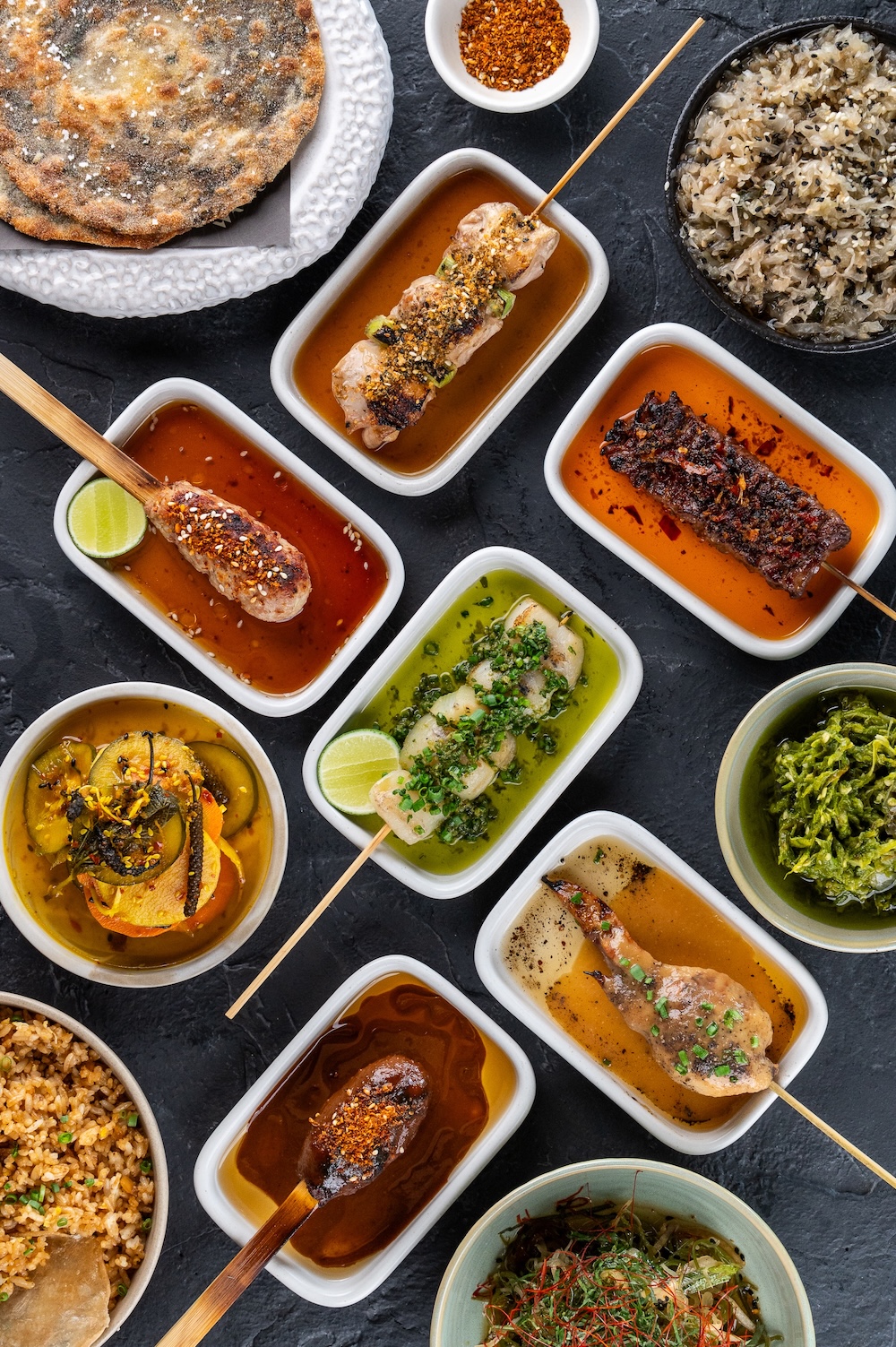
Since its opening last year, Waatu has been making a reputation for its no gas, no electricity, open-flame cooking. “To be able to cook everything on the menu with just timber is really special. It made us, the chefs, more connected to what we’re doing because we really have to focus. It’s not like stirring a pot on a gas stove, and all we need to do is stir it every 20 minutes. We need to actually stand here and be in tune with the fire. The fire is our friend,” says Viles.
Flame-kissed menu at Waatu by James Viles
Viles’ devotion to using seasonal and sustainable ingredients also means that the menu, whether at Waatu or Sundays Beach Club, is raised, caught or harvested locally. “Ninety-five percent of our produce is local, basically, except for the beef and salmon. We might just ditch the salmon, it bothers me. The biggest thing for us is locality in its totality,” adds the chef.
This ethos is ingrained within his 35-year culinary career that spans continents. Having worked in luxury hotels in Dubai to co-founding Biota Dining in New South Wales, Australia, his imaginative modern gastronomy approach and understanding of luxury hospitality sets him apart. His current mission as the Uluwatu’s property culinary director is to elevate and to reduce waste, as seen on the menu.
Waatu’s straightforward menu belies its complex preparation. The house tare-glazed yakitori section uses many parts of the chicken. Apart from dividing it into breast, thigh, bone-in wing, and stuffed wing, the chicken is also turned into a miso meatball while its skin is aged and stretched for three days, steamed, and threaded into the skewers. “That’s why I love yakitori. You can really break down an entire animal. Whether it’s beef, pork, or chicken, you get to use all different parts really nicely and respect the animal, rather than just using one part,” explains Viles.
“I think with cooking, one really important thing is to set boundaries. A lot of great restaurants do this. They set the discipline and the obstacle because that makes you think. You’ve got to be a bit more creative, you’ve got to really think about process… …By setting the boundaries, you force out creativity.”
At Waatu, he recommends guests use pieces of bread as the vessel, add yakitori or any other protein on sticks, enhance it with sauces and seasonings, wrap the entire thing, and eat it with their hands. This casual approach to dishes that are made with finesse is what sets the restaurant apart. Picture holding a fresh-from-the-oven scallion pancake, and filling it with char sui pork, tangy lacto-fermented pickles, and green sambal for a bit of zing. It is indeed a scrumptiously satisfying and mouth-watering thing to do.
Seaside nourishment at Sundays Beach Club
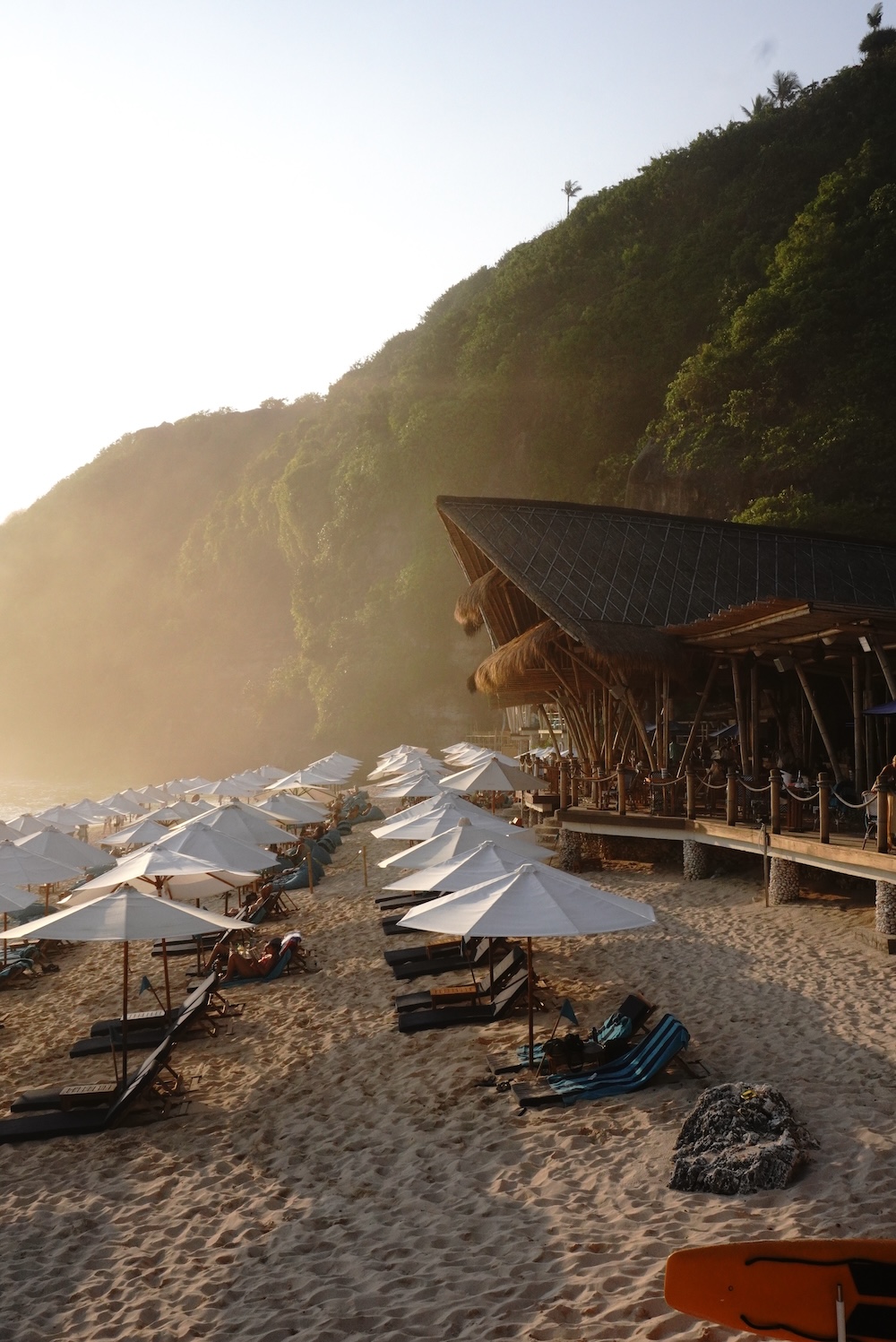
One can wax poetic about the natural beauty of the seaside club’s azure waters, the awe-inspiring funicular ride that carries guests to the beach, the forest-covered limestone cliffs that snugly protect the cove at one end, the dazzling sunshine, and the powdery white sand that beckons barefoot exploration. A visit to Sundays Beach Club will never fail to enchant, whether one comes for the first time or visits for the umpteenth time.
The best thing to do when one does visit is to come early, bring a big appetite, and an even bigger love for water activities. The inviting waters are perfect for swimming, stand-up paddle boarding, kayaking, and even a wee bit of snorkelling. And there’s nothing more appetising than after spending an active day under the sun. Chef James Viles has come up with a culinary offering that he refers to as measured dining.
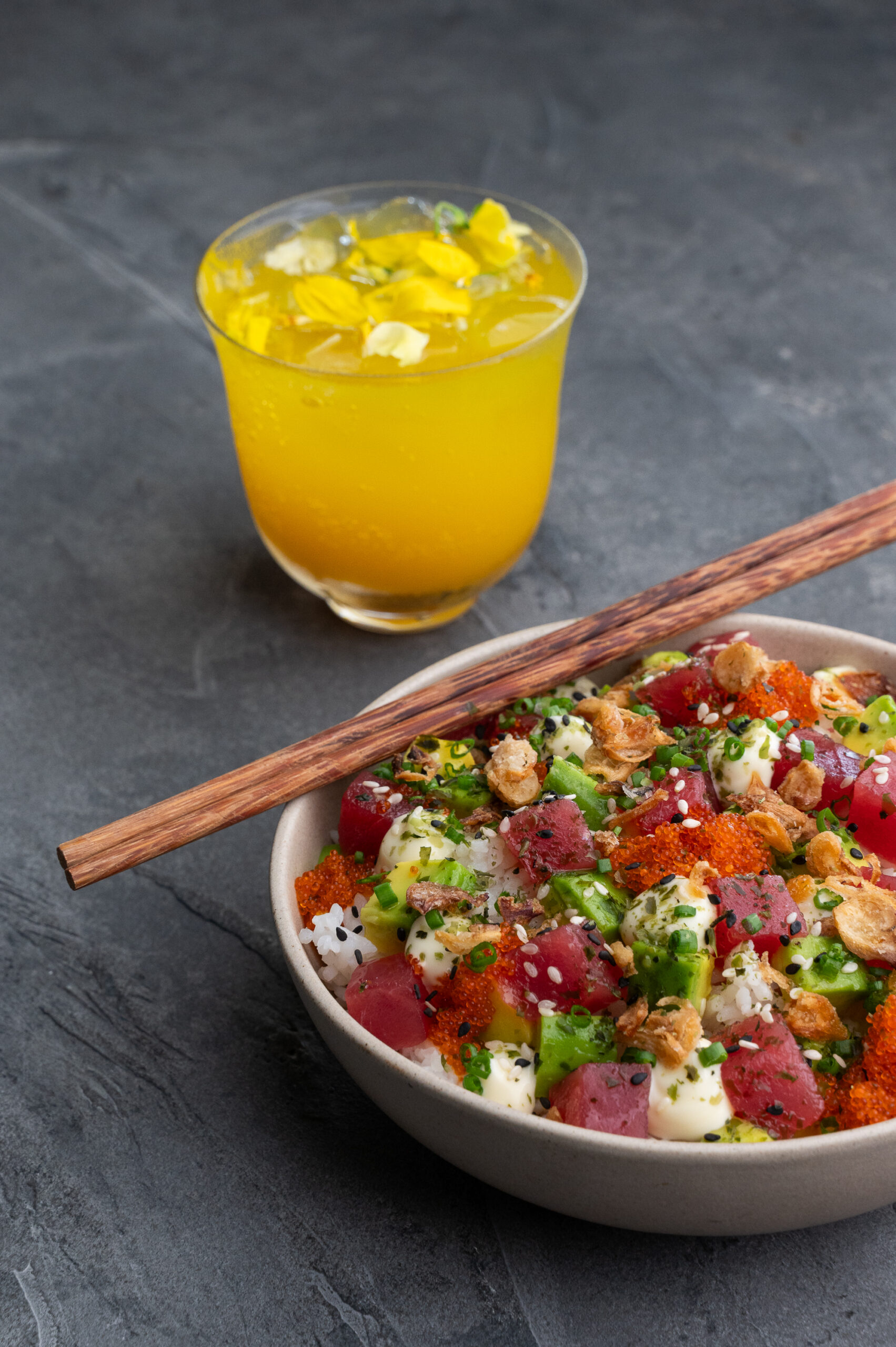
“There are days when we’re serving 500 to 600 people a day. If we can’t make the same thing over and over perfectly every single day, it doesn’t go on the menu. The food at Sundays Beach Club must be consistent,” he adds. Quality over quantity is the adage on the new menu. After all, nourishing dishes where calories are measurable and inclusive for different diets and restrictions are utterly relevant to our needs.
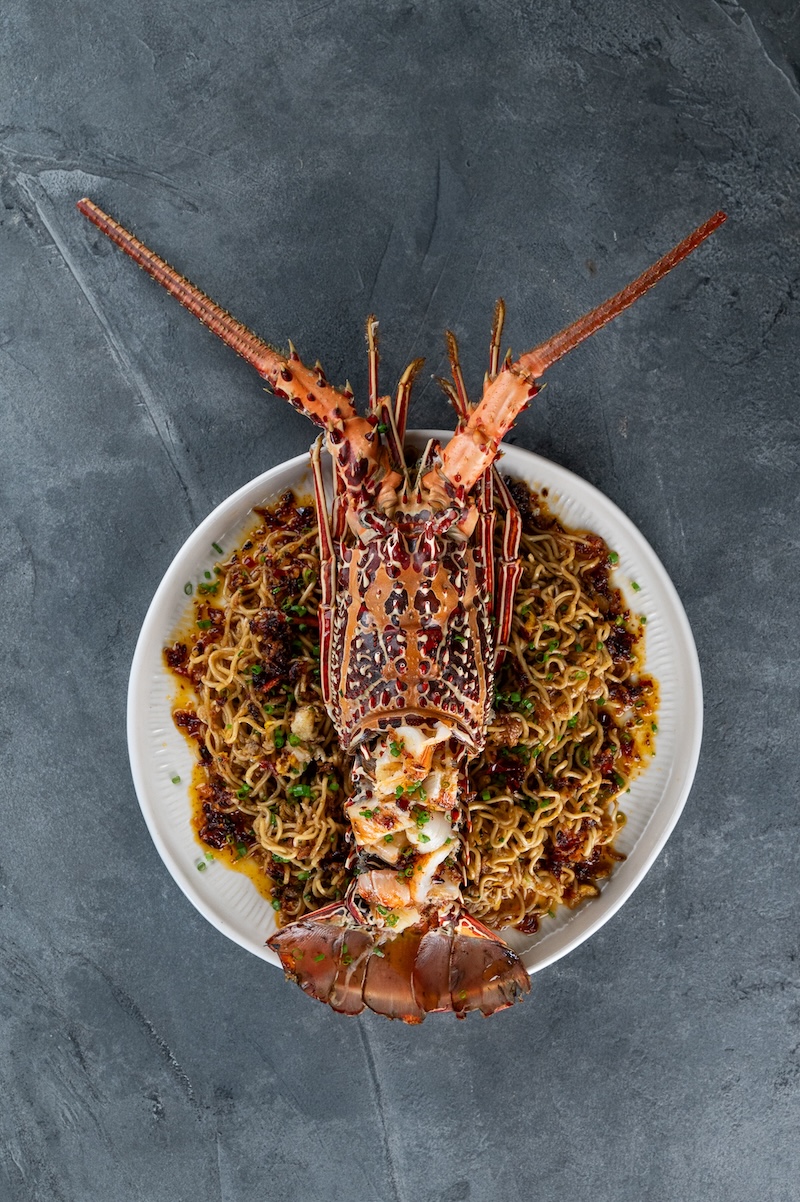
Sundays Beach Club’s current menu took its inspiration from delectable global cuisines. Picture chilling in one of the club’s sunbeds while nibbling on crispy lettuce filled with Duck San Choy Bau, merrily slurping XO Chilli Butter Noodles from under an enormous grilled whole lobster, sharing a lean Shawarma made of chicken, toum, pickle, and sumac cabbage, or devouring a refreshing Tuna Bowl with its brown rice, avocado, tamari, qp, and radish.
Cutting down waste is also Viles and the team’s focus this year. And it started right from the loading dock. The updated facility is now equipped with hundreds of red, green, and blue crates. In an attempt to use no single-use plastic, whenever a supplier arrives with their produce, they will be given a new crate for the next loading time. Blue crates are for the seafood, red is for the meats, and green is for the vegetables. “It’s more important about what you’re doing, not what you’ve done,” quips Viles.
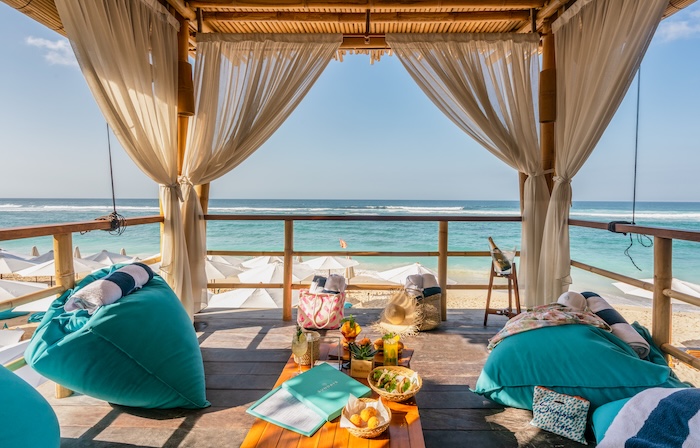
Chef James Viles has something up his sleeve. At the entrance to The Ungasan, lies a lush hidden garden. At its heart, stood an iron dome and an open fire pit for barbecue. His eyes light up when he speaks about cooking in nature.
“I’ve worked in kitchens with stainless steel benches with boxes of imported produce that took almost one week to reach the kitchen. That, for me, was not cooking anymore. I can’t connect to that. I prefer to go to touch the vegetables and meet the growers. I feel that I have to be out there in nature to be inspired to cook,” he says.
On special evenings, he would create a barbecue under the stars. For six to seven hours, he and his team would grill whole chickens, sets of beef ribs, vegetables, pineapple, and more. A nearby swirling root is where they place the canapes and yakitoris. “When you’re going out for dinner, you dine to create memories. If something memorable, or unexpected, happens during that dinner, the depth of that memory will stay with you forever. I always tell my team that even the smallest thing can be a memory for someone, but we have to make an effort to make it happen. That’s what we’re trying to do here every day.”
Waatu and Sundays Beach Club Jalan Pantai Selatan Gau, Banjar Wijaya Kusuma, Ungasan 80362. WhatsApp: +62 821 4405 7406

